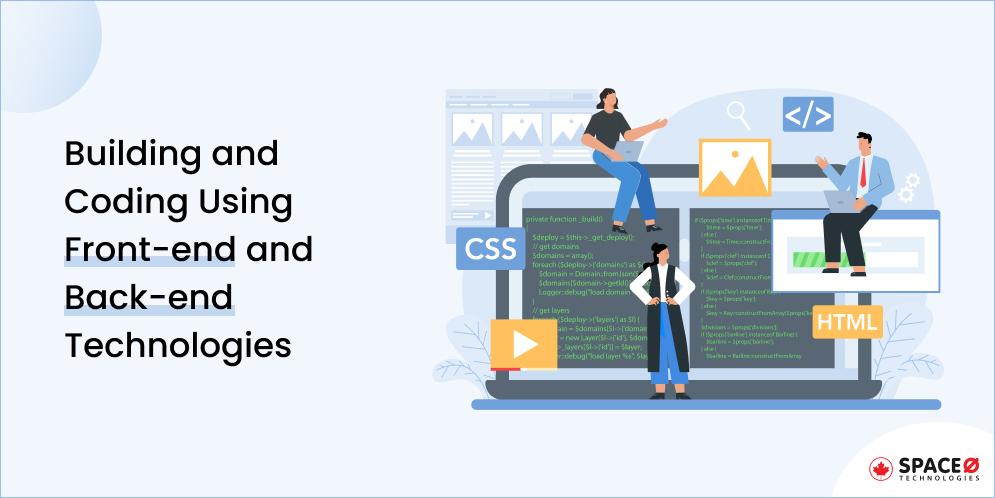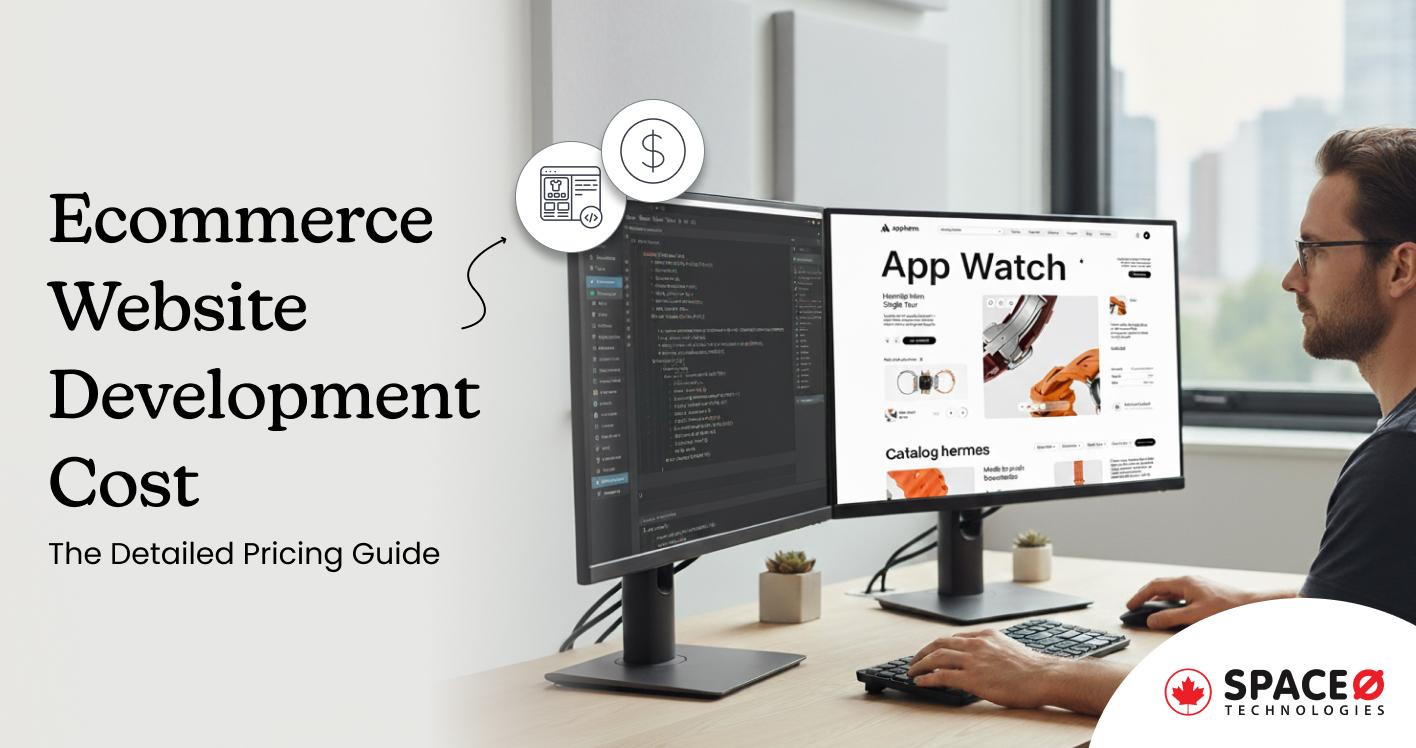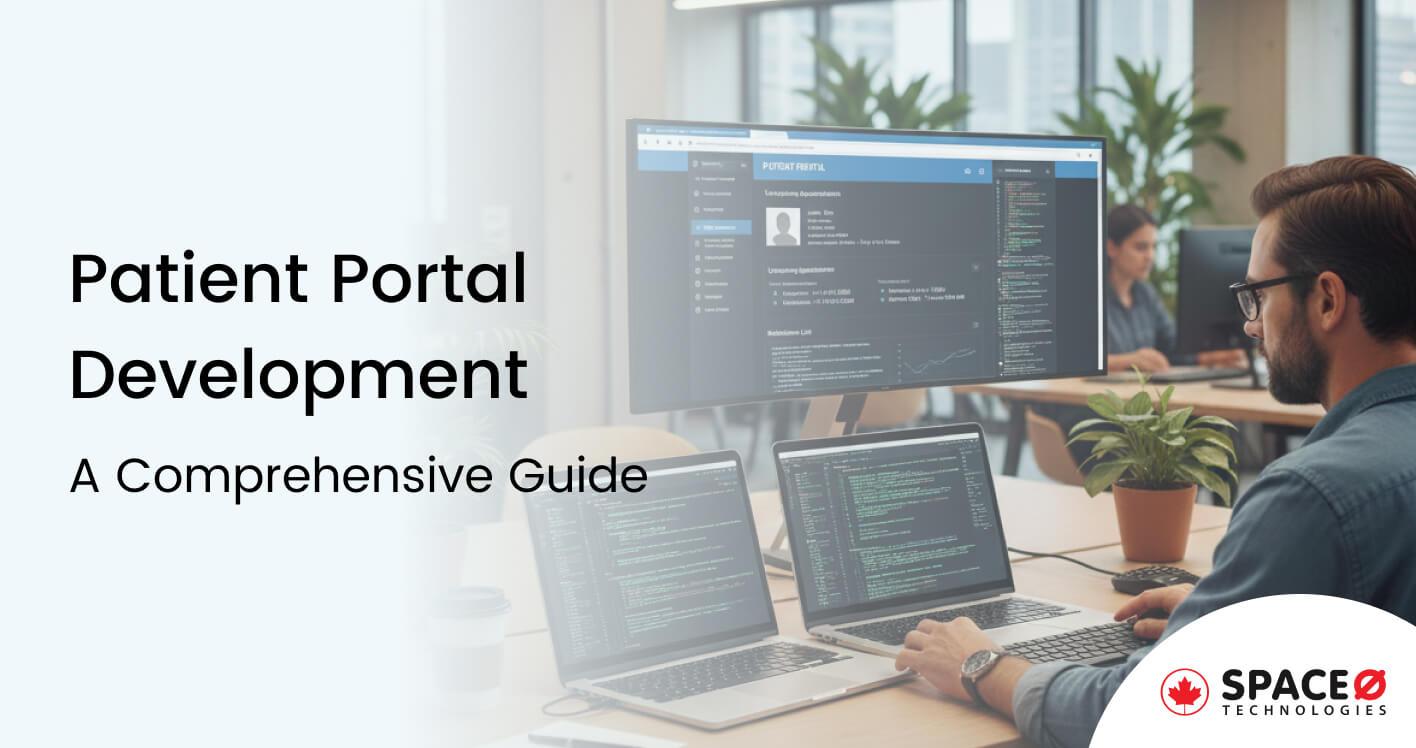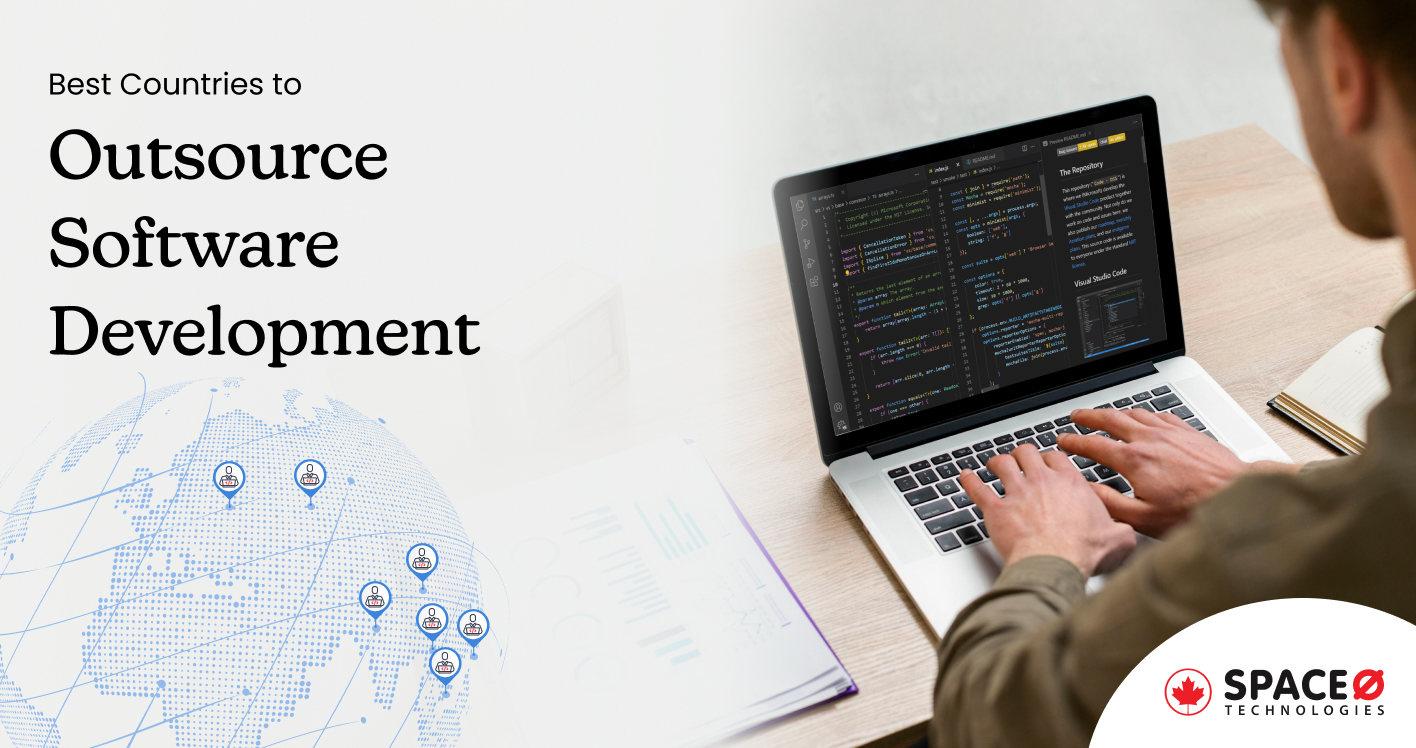
7 Key Phases of the Web Development Life Cycle: A Complete Breakdown
Developing a website takes more than just a few clicks. It’s a complex process that requires thorough execution and technical expertise.
A well-designed website enhances user experience and also aligns with your business objectives.
However, a lack of understanding about the web development process can lead to missed deadlines and budget overruns.
How can you ensure that your project is on track?
The solution is to understand the web development life cycle completely. Space-O is a reliable web development company with 7+ years of experience and can assist you throughout the process. Our web developers are skilled in creating custom solutions, from initial planning and design to development and launch.
First, let’s define web development. We will then highlight the key stages involved and explain how following a structured process can help you manage your web project while maintaining quality and staying within your budget.
What is Web Development?
Web development is the process of developing and maintaining a website or a web application. It also includes various tasks like web design, programming, and database management. Web development has two components: front-end development (client-side) and back-end development (server-side).
Web development can help your business cater to your customers’ requirements through a functional, accessible, and user-friendly website. It can also allow your business to build a strong online presence by reaching a broader audience and improving customer engagement.
A well-developed website enhances user experience by offering a smooth and appealing interface. Web development is also used to develop different types of applications, from eCommerce sites to informational platforms. Keeping websites up to date, including the latest technologies and tools, ensures businesses remain competitive. For more information, check out our guide on web development.
Looking for a Reliable Company for Your Web Project?
With 7+ years of experience, our web development team is here to help you create custom websites and web apps as per your specific requirements.

What is the Web Development Life Cycle (WDLC)?
The web development life cycle is a structured process for developing and maintaining websites or web applications, from inception to ongoing updates. Let’s review this overview of the entire web development process.
| Phase | Overview | Expected Outcome |
|---|---|---|
| Discovery & Planning | Project goals are aligned with client needs and a roadmap is created for execution | A clear understanding of project scope & a detailed project plan with timelines and resources |
| Design | The visual and functional blueprint of the website is established | Visual prototypes, UI/UX wireframes, and design guidelines |
| Content Creation | Content is developed and structured to engage and inform users | Finalized content, search engine optimization strategy, and media assets |
| Development | Designs are implemented into a functional website or web application | Fully functional front-end and back-end codebase |
| Testing | The website is evaluated to identify and fix any issues or bugs | A bug-free, fully tested website or web app ready for deployment |
| Deployment | The website is launched live for public use and optimization is ensured | Live website or web app accessible to the intended audience |
| Maintenance | The website is continuously monitored, updated, and enhanced | An optimized, secure, and up-to-date website or web app |
Now, let’s learn each phase of the web development life cycle in detail.
Step-by-Step Web Development Life Cycle: 7 Essential Phases
Here are the 7 key phases of the web development life cycle.
1. Conducting research and project planning

Whether you want to develop a website or a web app, the process starts with the discovery and planning phase. This phase involves getting a complete understanding of the project’s objectives, audiences, and scope. At this stage, collaboration with the team members is important to identify their vision, needs, and constraints. The goal here is to establish a detailed roadmap that guides the project from concept to completion.
Here are some of the key activities to consider during this phase.
- Requirement Gathering: Engage with the team to understand the project’s purpose, target audience, and specific requirements.
- Market Research: Analyze competitors and industry trends to identify opportunities and set benchmarks.
- Defining Project Scope: Determine the scope, including the features, functionalities, and expected deliverables.
- Resource Planning: Allocate resources like time, budget, and technology stack based on project requirements.
- Risk Assessment: Identify potential risks and challenges and develop mitigation strategies to address them.
Insightful Tip – Start your project with a detailed website development checklist. This will help you systematically address each phase, from discovery and planning to deployment and maintenance.
2. Designing and prototyping for optimal user experience

As the project transitions from planning to design, the focus is now on crafting the visual and functional aspects of the websites or web applications. This phase helps you know how your users interact with your product and ensure that the outcome aligns with your business goals and user expectations.
1. Website
At Space-O Technologies, the design phase in the website development life cycle involves thorough research to understand your audience’s needs and preferences. This data drives the creation of wireframes, which are basic layouts that outline the site’s structure and navigation.
Web designers then develop user interface (UI) elements like colors, typography, and imagery to create a visually appealing look. Several prototypes are developed to simulate user interaction and workflows. This allows stakeholders to explore the design and provide effective feedback before moving ahead.
2. Web Application
The design process involves similar steps but with additional complexity. User research is essential to identify specific functional requirements and user interactions. Wireframes and prototypes focus on mapping out intricate workflows and features to ensure the application supports complex tasks and data handling.
High-fidelity designs must balance functionality with usability to provide an intuitive interface that facilitates smooth user interactions. Interactive prototypes are particularly valuable in this phase as they help validate the application’s functionality and refine user experiences based on real-world scenarios.
This phase results in a set of detailed design documents and prototypes that guide the web development team. These deliverables ensure that the project’s visual and functional aspects are well-defined and aligned with your initial goals.
3. Developing and integrating content

The next step is developing and integrating content to engage your users and fulfill your project goals. This content creation stage involves producing text, images, videos, and interactive media.
Here, the primary goal is ensuring the content is relevant, informative, and aligned with the overall web design and user experience goals. Space-O Technologies does this by:
- Crafting compelling headlines, engaging body text, and clear CTAs. We ensure that the content resonates with your target audience.
- Developing images, graphics, and videos, complementing the design, and improving user engagement. We ensure the visual content is relevant to the topics covered.
- Creating user-friendly features for dynamic content, such as forms, dashboards, and data visualization, that support the site’s functionality.
- Optimizing content for search engines to improve visibility and ensure accessibility to all users.
Effective content creation ensures that websites and web apps communicate their messages clearly and offer an engaging user experience.
4. Building and coding using front-end and back-end technologies

With the design and content finalized, it’s time to develop a fully functional product using web development technologies, such as programming languages and frameworks. This development phase involves translating design elements into code using front-end and back-end technologies.
1. Front-end Technologies
Front-end technologies are used to develop web projects’ visual and interactive aspects. This table details which programming languages are used in the front end, their purpose, and their relevance to website and web application development.
| Technology | What It Does | Used For |
|---|---|---|
| HTML | Defines the structure of web pages, including text, images, and links. | Website & Web Application |
| CSS | Offers styles and layouts of web pages, including colors, fonts, and spacing. | Website & Web Application |
| JavaScript | Adds interactive elements like buttons, forms, and animations to web pages. | Website & Web Application |
| React | Creates interactive and dynamic user interfaces with component-based architecture. | Website & Web Application |
| Angular | Provides a comprehensive framework for building single-page applications with features like two-way data binding. | Web Application |
| Vue.js | Builds interactive UIs and single-page applications with a flexible and easy-to-learn framework. | Website & Web Application |
2. Back-end Technologies
Back-end technologies handle server-side logic, data management, and application performance. Now, let’s look at this table containing the details of which programming languages are used in the back-end, their purpose, and their relevance to website and web application development.
| Technology | What It Does | Used For |
|---|---|---|
| Node.js | Runs JavaScript code on the server side for building scalable network applications and handling server-side logic. | Website & Web Application |
| Express.js | Provides a minimalist framework for building robust web applications and APIs with Node.js. | Web Application |
| PHP | Executes server-side scripts to manage database interactions, process form data, and handle sessions. | Website |
| Python (Django/Flask) | Django: Offers a high-level framework for building secure and scalable web applications. Flask: Provides a lightweight framework for simpler applications. | Website & Web Application |
| Ruby on Rails | Facilitates rapid web application development focusing on convention over configuration and built-in tools. | Web Application |
| Java (Spring) | Supports the development of enterprise-level applications with features like dependency injection and security. | Web Application |
| SQL | Manages relational databases by executing queries to store, retrieve, and manipulate structured data. | Website & Web Application |
| NoSQL (MongoDB) | Handles unstructured or semi-structured data with a flexible schema, suitable for scalable applications. | Website & Web Application |
Now that you understand front-end and back-end technologies and their roles in website and web application development, let’s move on to the next phase.
5. Testing functionality and performance

Testing ensures that websites and web applications are successfully developed and provide a seamless user experience. This phase involves several types of testing to verify the quality and performance of the website or web app and help identify various issues that might affect usability or functionality. Let’s examine each test carried out for the web project.
- Functional Testing: Checks if the website or web application performs its functions correctly. This includes testing features like form submissions, user interactions, and data processing.
- Usability Testing: Assesses how easy and intuitive the site or application is for users. This involves evaluating the navigation, user interface design, and overall user experience.
- Integration Testing: Checks that the website or web application components work together. This involves testing interactions between modules, APIs, and external services.
- Performance Testing: Measures the speed, responsiveness, and stability of the website or web app under average and peak loads.
- Unit Testing: Focuses on testing individual components or functions to identify and fix issues early in the web development.
- User Acceptance Testing (UAT): Involves real users testing the website or web application to ensure it meets their needs and expectations.
- Regression Testing: Verifies that new changes or updates do not negatively impact existing functionality. This ensures that previously fixed issues remain resolved.
By thoroughly performing all these tests, web developers ensure your product meets user expectations and performs optimally.
Want to Develop a Website or a Web App?
Contact Space-O Technologies. We have a team of proficient web developers who are experts at delivering custom web solutions using React, Angular, and Python.
6. Deployment and optimization for live use

After the testing phase, the website or web app is fully functional, leading us to deployment. This phase involves transitioning the product from a staging environment to a live server, making it available to users. Here are some key steps in the deployment process.
- Setting up the production environment by configuring web servers and ensuring the infrastructure components are in place.
- Deploying the code by transferring the final version to the live server.
- Final checks confirm that the deployment is successful and that the site or application functions well.
After the deployment, the focus shifts to optimization. This part involves fine-tuning several aspects to improve performance and ensure the site or application remains stable under real-world conditions. This process involves the following steps:
- Improving load times and responsiveness through performance tuning.
- Tracking user interactions and collecting feedback to identify areas for improvement.
- Implementing changes based on user feedback and performance data.
Web developers can deliver a superior user experience by carefully managing the deployment process and constantly optimizing the product.
Insightful Tip – Use Real User Monitoring (RUM) with traditional performance tools to gather insights into user experiences. This combination helps identify real-world issues that standard metrics miss, leading to more precise optimization.
7. Maintenance and regular updates

Your business needs to maintain the smooth and secure operation of your website or web application. This final phase involves regularly checking the product for bugs and fixing them, updating software and plugins, and addressing any issues that arise post-launch.
This phase also involves optimizing performance based on feedback received after launching the website or web app and adapting to emerging trends. This ensures compatibility with the latest technologies and web browsers and includes implementing security patches to protect from vulnerabilities. Regular maintenance helps ensure the site or application’s ongoing functionality, security, and relevance, which is why investing in website maintenance services can be valuable for long-term success.
Managing each web development life cycle phase ensures a smooth website creation process. This approach helps you meet project goals, stay within budget, and deliver a high-quality user experience.
Frequently Asked Questions
How does the web development life cycle differ for websites and web apps?
The web development life cycle for websites and web apps follows the same fundamental stages, but the complexities and focus areas differ. Websites involve straightforward design and content delivery, focusing on user experience and aesthetic appeal. On the other hand, web apps require more intricate development due to their interactive functionalities and integrations with back-end systems.
How long does each web development life cycle phase take?
The duration of each phase can vary based on the project’s complexity, scope, and requirements. For example, the discovery and planning phase might take a few days to weeks, while the development phase for larger web applications can take several months.
Can changes be made after the design or development phase?
Yes, changes can be made at any phase, but it’s easier and more cost-effective to make revisions during the design or planning phase. Late-stage changes, especially during or after development, may require additional time and resources. You can use a feedback loop for adjustments and meet the website development project objectives.
How can delays be avoided in the web development life cycle?
We ensure to protect the sensitive data by signing NDA with our clients and developers who will work on the project. As we know the importance of the sensitive information of your software, we follow the utmost level of security protocols to keep your project information safe and secure.
Streamline Your Web Project with a Complete Development Plan
Now you know the importance of the web development life cycle in creating a website that meets your expectations and user’s needs. Understanding all the stages and approaching each step with a clear plan can help you avoid common pitfalls and manage your web development project.
Space-O Technologies is a professional web development company with 7+ years of experience and a track record of developing 300+ web apps. Our approach to Agile methodologies and adherence to strict ISO 27001 and 9001 standards ensure that we deliver high-quality web solutions.

Need Custom Web Development?
Editor's Choice

Ecommerce Website Development Cost: The Detailed Pricing Guide

Patient Portal Development – A Comprehensive Guide

10 Best Countries to Outsource Software Development
All our projects are secured by NDA
100% Secure. Zero Spam
*All your data will remain strictly confidential.
Trusted by


Bashar Anabtawi
Canada
“I was mostly happy with the high level of experience and professionalism of the various teams that worked on my project. Not only they clearly understood my exact technical requirements but even suggested better ways in doing them. The Communication tools that were used were excellent and easy. And finally and most importantly, the interaction, follow up and support from the top management was great. Space-O not delivered a high quality product but exceeded my expectations! I would definitely hire them again for future jobs!”

Canada Office
2 County Court Blvd., Suite 400,
Brampton, Ontario L6W 3W8
Phone: +1 (437) 488-7337
Email: sales@spaceo.ca

